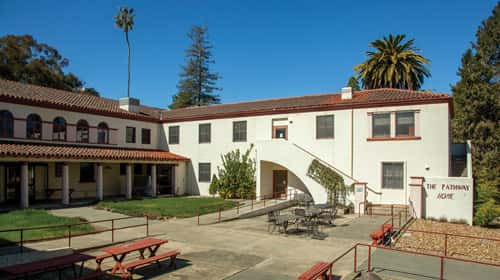The Pathway Home, after a period of intense research and program development, is accepting applications from post 9/11 veterans working on their college and vocational programs. The program, designed specifically for the needs of student veterans returning after one or more deployments, offers a full-professional staff and a mission focused on providing educational, professional and clinical support to help returning veterans complete their education and build successful lives. The Pathway Home, Inc. will provide these young men (and women once the program can accommodate them) with the tools they need to transition service members to productive civilians, at home in the local community.
Why do soldiers need help?
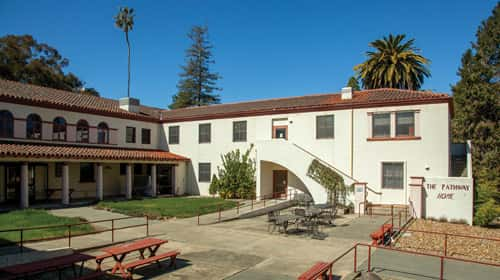 To understand why these veterans—supremely capable in the military—may need support to re-enter civilian life, imagine the process they went through as high school graduates, transforming into highly-disciplined members of tight and focused combat teams, putting their lives on the line in hostile territory to serve their country.
To understand why these veterans—supremely capable in the military—may need support to re-enter civilian life, imagine the process they went through as high school graduates, transforming into highly-disciplined members of tight and focused combat teams, putting their lives on the line in hostile territory to serve their country.
“When you go through boot camp, there’s a moment when you say, I’ve just made the biggest mistake in my life,” says Cassidy Nolan, president of the Veteran Student Organization at Napa Valley College in Napa, who served two tours in Afghanistan. He laughs, but he’s serious. “You’re pushed to a level where you never thought you could go, and it hurts. But at the end of it, there’s a euphoria that can’t be matched. When you earn the title of airman, soldier, sailor or Marine, you become part of history.” But transitioning to civilian life can be disorienting. As Nolan says, in the most positive sense, they’ve been institutionalized; they’ve been part of a team; everything was done for them; they haven’t even had to manage a checkbook. Suddenly, they’re back home, on their own for the first time since high school. They have no purpose, no mission, no one telling them what to do. “When you come back, you’re absolutely ecstatic at first,” he says. “And you can take your armor off—literally and figuratively—and say, ‘Ah, I can relax, I can breathe.’ But there’s anxiety and stress, too.”
Cassidy came home to a waiting wife and child—a new world compared to the service he recently left. The culture shock could be jarring to returning veterans, once used to bearing heavy responsibilities for the unit. Reflexes trained to respond to the circumstances of warfare are ineffective when sitting in a classroom with clueless 18-year olds. The different pace with this new lifestyle could lead to frustration, bitterness and depression. It makes the toughest servicemen and women susceptible to falling behind, dropping out, self-medicating with drugs and alcohol and losing the opportunities they fought so hard for.
Cassidy took action. As a student at NVC, he requested permission from the school administration to create a veterans club where he and other vets can hang out, study together, or just talk because being together can be life saving. “If you ask a lot of servicemen what they miss the most, they’ll say, ‘I miss the camaraderie. I miss the friendships, which is why The Pathway Home is fantastic. It offers an experience soldiers identify with,” he says.
Then and now
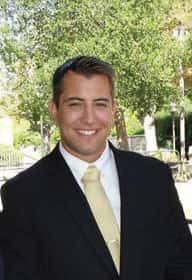 The Pathway Home, Inc. was launched in 2008, with a $5.4 million grant from an anonymous Vietnam veteran made through the San Francisco based Tides Foundation, a fiscal sponsor which serves nonprofits by facilitating grant-making programs for individual donors. The original mission of The Pathway Home centered around the emotional healing of participating veterans suffering from Post Traumatic Stress Disorder (PTSD) and mild Traumatic Brain Injury (mTBI). Within eight years, the program helped more than 450 veterans. Anyone who has attended their graduation ceremonies will know, from the tearful speeches of the graduates and the warm applause of the audience, how grateful these young men were for The Pathway Home’s help as well as for the support they received from the business community and private donors of Napa.
The Pathway Home, Inc. was launched in 2008, with a $5.4 million grant from an anonymous Vietnam veteran made through the San Francisco based Tides Foundation, a fiscal sponsor which serves nonprofits by facilitating grant-making programs for individual donors. The original mission of The Pathway Home centered around the emotional healing of participating veterans suffering from Post Traumatic Stress Disorder (PTSD) and mild Traumatic Brain Injury (mTBI). Within eight years, the program helped more than 450 veterans. Anyone who has attended their graduation ceremonies will know, from the tearful speeches of the graduates and the warm applause of the audience, how grateful these young men were for The Pathway Home’s help as well as for the support they received from the business community and private donors of Napa.
In 2015, when Fred Guzman, the founder and original executive director, retired, The Pathway Home board of directors took the opportunity to review their accomplishments and launch a thorough study into current veteran needs. They then worked to create the best and most sustainable program to meet those needs going forward. The Pathway Home board president Dorothy Salmon and her board of directors sought the advice of the San Francisco VA Health Care System’s Keith Armstrong, LCSW, Director of SFVA’s student veteran health and family therapy program, and professor of psychiatry at the University of California, San Francisco. He is also author of Courage After Fire: Coping Strategies for Troops Returning from Iraq and Afghanistan and Their Families, and is fully aware of the re-entry problems of post 9/11 veterans. He encouraged Salmon to do an in-depth assessment before making new plans. Salmon met with and commissioned Jessica Gundy Cuneo, Ph.D., a respected clinical psychologist with the Department of Veterans Affairs in San Diego to help with the assessment and make recommendations based on current veterans’ needs.
Bridging the gap
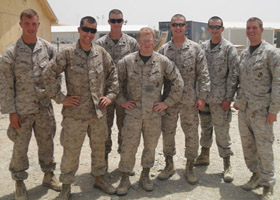 “We know there’s a gap in service,” says The Pathway Home new executive director Christine Loeber, M.S.W., a therapist with a background in corporate development work, and nearly a decade with the VA Health Care Systems, providing evidenced-based treatment for veterans with PTSD and readjustment issues. “Veterans who’ve done multiple deployments, or who have seen hundreds of days in combat, were coming back and being asked to ‘readjust’, and often without the supports they need to do this successfully,” she says. “They feel pressure to jump right back into their lives, return to school, and ‘be fine,’ but if they’re struggling with readjustment issues, with anxiety, depression and general stress (not to mention PTSD or mTBI) they’re going to have a hard time concentrating and keeping up academically.” The result is they often fall behind, lose confidence, drop out, and then fail to take full advantage of their education benefits. They–and the community–can’t afford to let that happen. “We’re now in a global economy where there is so much competition for jobs,” says Loeber. “By providing veterans with the supports and services they need early on, we’re setting them up to succeed in this competitive work environment.”
“We know there’s a gap in service,” says The Pathway Home new executive director Christine Loeber, M.S.W., a therapist with a background in corporate development work, and nearly a decade with the VA Health Care Systems, providing evidenced-based treatment for veterans with PTSD and readjustment issues. “Veterans who’ve done multiple deployments, or who have seen hundreds of days in combat, were coming back and being asked to ‘readjust’, and often without the supports they need to do this successfully,” she says. “They feel pressure to jump right back into their lives, return to school, and ‘be fine,’ but if they’re struggling with readjustment issues, with anxiety, depression and general stress (not to mention PTSD or mTBI) they’re going to have a hard time concentrating and keeping up academically.” The result is they often fall behind, lose confidence, drop out, and then fail to take full advantage of their education benefits. They–and the community–can’t afford to let that happen. “We’re now in a global economy where there is so much competition for jobs,” says Loeber. “By providing veterans with the supports and services they need early on, we’re setting them up to succeed in this competitive work environment.”
The new program will benefit from the VA’s extensive knowledge in the problems and treatment of returning vets. “The VA has been instrumental in helping The Pathway Home understand how to help with the challenges veterans face,” she says. “They have a breadth and depth of knowledge that is unique and valuable. As a non-profit, we can put this knowledge to use in a way that is nimble and responsive to veteran’s needs.”
The Pathway Home’s new program provides educational, professional, and clinical services in a transitional residential setting, so student veterans can readjust to the environment while focusing on their education. The program is open to both veterans enrolled in post-secondary college or vocational programs and those committed to enrolling in the next term, who will benefit from the structure and support of a residential situation. “We see an opportunity to step in early with a supportive, holistic learning environment,” says Loeber, “with a treatment program that offers these veterans a place to come and get the support and skills they need so they don’t fall into crisis.”
Introducing coping strategies early on helps veterans to manage symptoms in a healthful way, Loeber explains, and more effectively than by self-medicating through drugs and alcohol. With social and emotional support, returning veterans can strengthen the skills they need to be successful. A key to the success of the program is the network of partnerships The Pathway Home provides.
Business benefits, too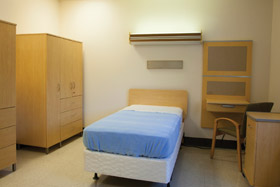
Businesses in the North Bay are also interested in helping veterans integrate into civilian life. “We have a wonderful community of individuals, private citizens, corporations and businesses, including North Bay Rotary clubs and individual businesses who are saying, ‘What can we do? How can we help?’” says Salmon. “We have great partners—such as the Workforce Alliance of the North Bay—with the skills and passion to assist our returning veterans as they reintegrate from the military to school and onto employment.
The Pathway Home board members are all philanthropically inclined, she says, but they are also community citizens and business people. “As business and community leaders, we had an opportunity to go to the VAs, to talk to people, to read studies, to be informed and then ask key professionals to help us bring together a program to benefit our veterans and the community alike.” One of Salmon’s great pleasures is bringing people together for mutual benefit. Napa is known for that spirit, and so are other North Bay counties. “We have lots of businesses in the North Bay that want to know how to help, too,” she says. “One of the best examples I’ll give you is Jonny Karpuk, who runs First American Title in Napa. He hired Cassidy Nolan to work in his company.”
“I’m a vet too,” says Karpuk. A West Point graduate and Army combat engineer, he spent a year in Iraq and a year in Afghanistan as an Army combat engineer between 2001 and 2006. So when Salmon introduced him to Nolan he could see his potential right away. “I think Cassidy is a great example of all the tremendous capacity that people with his background can bring,” he says. “He’s got a wide range of experience. He’s seen a lot in a short time. He’s got an old soul. He’s eager to contribute. So you get a great sense of purpose.”
Public-private partnerships
Today, the Veterans Health Administration policy is to promote the responsible, productive, and innovative public-private partnerships at the national, regional and community levels. The idea is that public-private partnerships can enable the program to more effectively address the specific needs of the student veterans. The Pathway Home has entered into a new partnership with the San Francisco Veterans Affairs Health Care System and continues their long-standing partnership with the Veterans Home of California at Yountville, along with business and service club partners.
The Pathway Home is a fully self supporting, independent non-profit, with revenue coming from resident contributions ($700 per month toward room, board and services) and the rest provided through private donations and grants. The San Francisco Veterans Affairs Health Care System will fund a part time psychologist and the California Department of Veterans Affairs will continue to lease space in the Veterans Home at Yountville at a discount to The Pathway Home.
“What we’re doing here with the community, with the colleges, with the Department of Veterans Affairs at the state and federal level, is the quintessential public-private partnership,” says Salmon. In essence, the Pathway Home is designing an innovative, sustainable and replicable program to serve its population in a holistic way and to help them become healthy and contributing members of the community. “We’re taking struggling veterans, and help make them whole,” she says. “These guys are not going to be on the street homeless. They are going to become part of a unit again, working to become community members and taxpayers. And the key here, is the partnerships.”
The Pathway Home has benefitted from the interest and generosity from individual donors who want to support the program, and the board will always be looking for ways to include more donors. Says Salmon, “My personal goal is to say, The GI Bill in the 21st century works in this tough global economy if you have a robust partnership and the community is again a partner.” After all, she says, the whole community wants to help them.
For Christine Loeber, the answer is what they’re practicing at The Pathway Home every day. “The best way we can thank veterans for their service is to be here for them when they return with a program like The Pathway Home to support them, to provide something long term that will be valuable,” she says. Her hope is that the support Pathway Home provides veterans stays with them as they move through their academic or vocational journey and that the skills they develop will be useful for them throughout their lives.
How to help veterans
When you meet a returning vet, remember that you’re looking at someone who has been extremely competent in a military context, who accomplished difficult tasks and who is looking to rebuild that competence, in the context of home and community.
“Don’t look at me as a broken-winged bird,” says Cassidy Nolan. “Don’t look at me as a second-class citizen. Don’t look me as someone who might go off the handle and start throwing things. The reality is a lot of us want to get an education. We want to go to work. We want to help people again.”
“We want the veterans to know they’re not alone in their journey back into civilian life,” adds Christine Loeber. “We want to be there for them to help them do the best they can, and help figure out what it is that’s going to make this phase of their life fulfilling.”
Says Salmon, “This Pathway Home program will encourage people to be there, and will give them guidelines for how to do that.”
For more information, go to thepathwayhome.org.
The Challenges Vets Face
There are more than 1.9 million veterans in California, and many face challenges. Here are some of the facts:
Young male veterans (ages 18 to 24) have a higher unemployment rate than their civilian counterparts, while older vets have a lower unemployment rate.
Veterans are “over-represented” in the homeless population and research shows that veterans living in poverty are more likely to move into homelessness than their peers.
More than two-thirds of today’s veterans reported difficulties adjusting to civilian life.
Post-9/11 veterans reported difficulty adjusting to civilian life, with 68 percent of veterans who served after 9/11 reporting adjustment challenges compared to 45 percent of pre-9/11 veterans.
Many veterans report they had not realized how much their military service had changed them, and how different they were from their civilian counterparts.
In many respects, veterans expressed superiority to their civilian counterparts in terms of values, work ethics, and life experiences, but at the same time felt their service left them years behind their peers in terms of career and professional development.
Many veterans report that they were generally surprised when they encountered employment struggles as they had been told “by everyone” they would be highly sought after by civilian employers.
Sources: the American Community Survey (ACS) and from the State of the American Veteran: Los Angeles County Veterans Study, 2013
Sonoma County Helps with Veteran Housing
Housing Sonoma County is moving forward with placing 12 Tiny Bedroom Shelters on the County complex site for a two-year pilot project known as Veterans Village at the County, according to Ross Liscum, U.S. Marine Corps Community Vietnam Veteran and Community Housing Sonoma County Board member. Construction is expected to be completed this summer.
After two years, these 12 shelters are proposed to be re-located to the Hearn Avenue Veterans Village, where16 veterans currently reside, along with another 20 bedroom units that will be built and installed.
There will be four bedrooms grouped around a common deck with individual porches, for a total of three groupings of four bedroom units each. Each bedroom unit will be 250 square feet, self-contained and 100 percent accessible. They will come furnished and will share a common deck and laundry room with the three other bedroom units in their grouping. There will be a full sized Murphy bed, a closet, built-in desk, shelves, a sink area and a separate toilet and shower room. Gas will be provided from a propane tank and electricity from battery storage charged by solar panels on each roof and a propane powered generator for heat in the wintertime. The cost per bedroom unit is projected to be $36,417.
Veterans with a HUD VASH voucher are referred to the Santa Rosa HUD VASH program through outreach efforts by VA staff, Vet Connect and other outside organizations including the Homeless Outreach Service Teams funded by the county of Sonoma.


